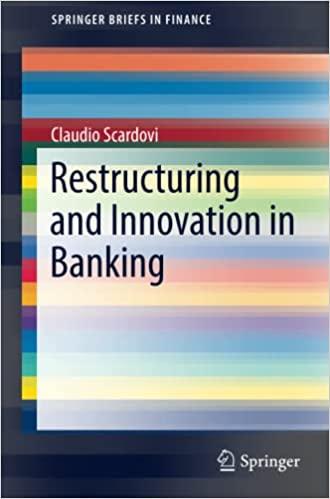Question
Read the article in the link below. https://www.federalreserve.gov/econresotes/feds-notes/equity-issuance-and-retirement-bynonfinancial-corporations-20170616.htm a) Were U.S. nonfinancial corporations on average issuing new equity or buying their shares back? Provide evidence
Read the article in the link below. https://www.federalreserve.gov/econresotes/feds-notes/equity-issuance-and-retirement-bynonfinancial-corporations-20170616.htm a) Were U.S. nonfinancial corporations on average issuing new equity or buying their shares back? Provide evidence from the article.
b) The pattern of corporate financing is discussed in the below. Explain the reasons for this pattern of financing using all relevant topics/theories of capital structure.
 In practice, what has been the split between internal and external financing? Figure 15.2 breaks down total financing for U.S. businesses into internal financing, financing through new equity, and financing through new debt for each year from 1995 to 2010. Consider 1995, for example. Internal financing in the U.S. was about 75 percent of the total, new debt was somewhat above 25 percent of the total, and new equity was a slightly negative number. Notice that in this year, as in all the years, thethree sources of funds must add to 100 percent. If you are wondering why net equity is a negative number, it is because corporations repurchased more stock than they issued in that year. In fact, new equity was negative in all the years of our sample, indicating that the dollar amount of stock buybacks exceeded the dollar amount of stock issues in each year of the sample period. The figure illustrates a number of points. First, internally generated cash flow has been the dominant source of financing. Second, this dominance has increased over the sample period, with internal financing actually exceeding 100 percent for most of the years from 2002 to 2010. A number above 100 percent implies that external financing is negative. In other words, corporations are, in dollar terms, redeeming more stocks and bonds than they are issuing. Third, net stock buybacks appear to have accelerated from 2002 to 2007. It is argued that firms were flush with cash during this time and found stock repurchases more attractive than dividend payments. However, the economic problems beginning in 2008 greatly reduced the dollar amount of stock repurchases. Stock repurchases will be discussed in more detail in later chapters.
In practice, what has been the split between internal and external financing? Figure 15.2 breaks down total financing for U.S. businesses into internal financing, financing through new equity, and financing through new debt for each year from 1995 to 2010. Consider 1995, for example. Internal financing in the U.S. was about 75 percent of the total, new debt was somewhat above 25 percent of the total, and new equity was a slightly negative number. Notice that in this year, as in all the years, thethree sources of funds must add to 100 percent. If you are wondering why net equity is a negative number, it is because corporations repurchased more stock than they issued in that year. In fact, new equity was negative in all the years of our sample, indicating that the dollar amount of stock buybacks exceeded the dollar amount of stock issues in each year of the sample period. The figure illustrates a number of points. First, internally generated cash flow has been the dominant source of financing. Second, this dominance has increased over the sample period, with internal financing actually exceeding 100 percent for most of the years from 2002 to 2010. A number above 100 percent implies that external financing is negative. In other words, corporations are, in dollar terms, redeeming more stocks and bonds than they are issuing. Third, net stock buybacks appear to have accelerated from 2002 to 2007. It is argued that firms were flush with cash during this time and found stock repurchases more attractive than dividend payments. However, the economic problems beginning in 2008 greatly reduced the dollar amount of stock repurchases. Stock repurchases will be discussed in more detail in later chapters.
Figure 15.2 Financing Decisions by U.S. Nonfinancial Corporations 150% Internal financing New equity New debt 125% 100% 75% 50% 25% 0% -25% -50% -75% -100% -125% -150% 1995 1996 1997 1998 1999 2000 2001 2002 2003 2004 2005 2006 2007 2008 2009 2010 SOURCE: Board of Governors of the Federal Reserve System. "Flow of Funds Accounts of the United States." Federal Reserve Statistical Release. June 9, 2011,
Step by Step Solution
There are 3 Steps involved in it
Step: 1

Get Instant Access to Expert-Tailored Solutions
See step-by-step solutions with expert insights and AI powered tools for academic success
Step: 2

Step: 3

Ace Your Homework with AI
Get the answers you need in no time with our AI-driven, step-by-step assistance
Get Started


